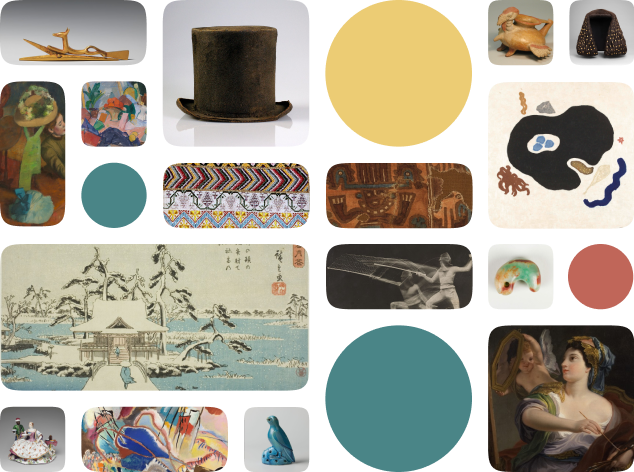Scimitar with Scabbard
Creator Name
Cultural Context
Date
Source
About the Work
This is a scimitar, a type of curved sword originally used in the Middle East, South Asia, and North Africa. This scimitar’s journey represents the flow of trade and diplomacy through the Ottoman Empire. Persian swordsmiths fashioned the blade in the late 16th century or 17th century. An inscription on the blade reads, in Arabic, “I have entrusted myself to God.” Ottoman artists made the hilt and scabbard, or cover. The scabbard is so bejeweled it may as well be a small, mobile treasury. The Ottoman artist encrusted the brass hilt and scabbard with silver, gold, jade, and turquoise. The Ottomans used this group of highly decorated weapons, including swords, shields, and saddles, for parades and other state occasions. Ottoman officials often gave these ceremonial weapons as diplomatic gifts, and many ended up in European treasuries. Indeed, Spanish historians documented this sword as part of the Madrid Royal Armory in 1898.
Work Cited
“Real Armeria De Madrid. Catalogo Historico-Descriptivo.” Edited by Juan Crooke y Navarrot, Google Books, Maxtor Editorial, 17 July 2008, https://www.google.com/books/edition/REAL_ARMERIA_DE_MADRID_CATALOGO_HISTORIC/yrPbYQxOkrgC?hl=en&gbpv=0.
Work Cited
“Real Armeria De Madrid. Catalogo Historico-Descriptivo.” Edited by Juan Crooke y Navarrot, Google Books, Maxtor Editorial, 17 July 2008, https://www.google.com/books/edition/REAL_ARMERIA_DE_MADRID_CATALOGO_HISTORIC/yrPbYQxOkrgC?hl=en&gbpv=0.
Metropolitan Museum of Art Object Description
Scimitar with scabbard
Work details
"--" = no data available
Title
Creator
Worktype
Cultural Context
Material
Dimensions
Technique
--
Language
Date
Provenance
Style Period
--
Rights
Inscription
Location
Source
Subjects
Topic
--
Curationist Contributors
Related Content
All Works in Curationist’s archives can be reproduced and used freely. How to attribute this Work:
Unknown, Scimitar with Scabbard, late 16th–17th century. Metropolitan Museum of Art. Through the Ottoman Empire, weapons were often given as diplomatic gifts. This scimitar’s journey represents the flow of trade and diplomacy. Public Domain.
Help us improve this content!
Let our archivists know if you have something to add.
Save this work.
Start an account to add this work to your personal curated collection.
